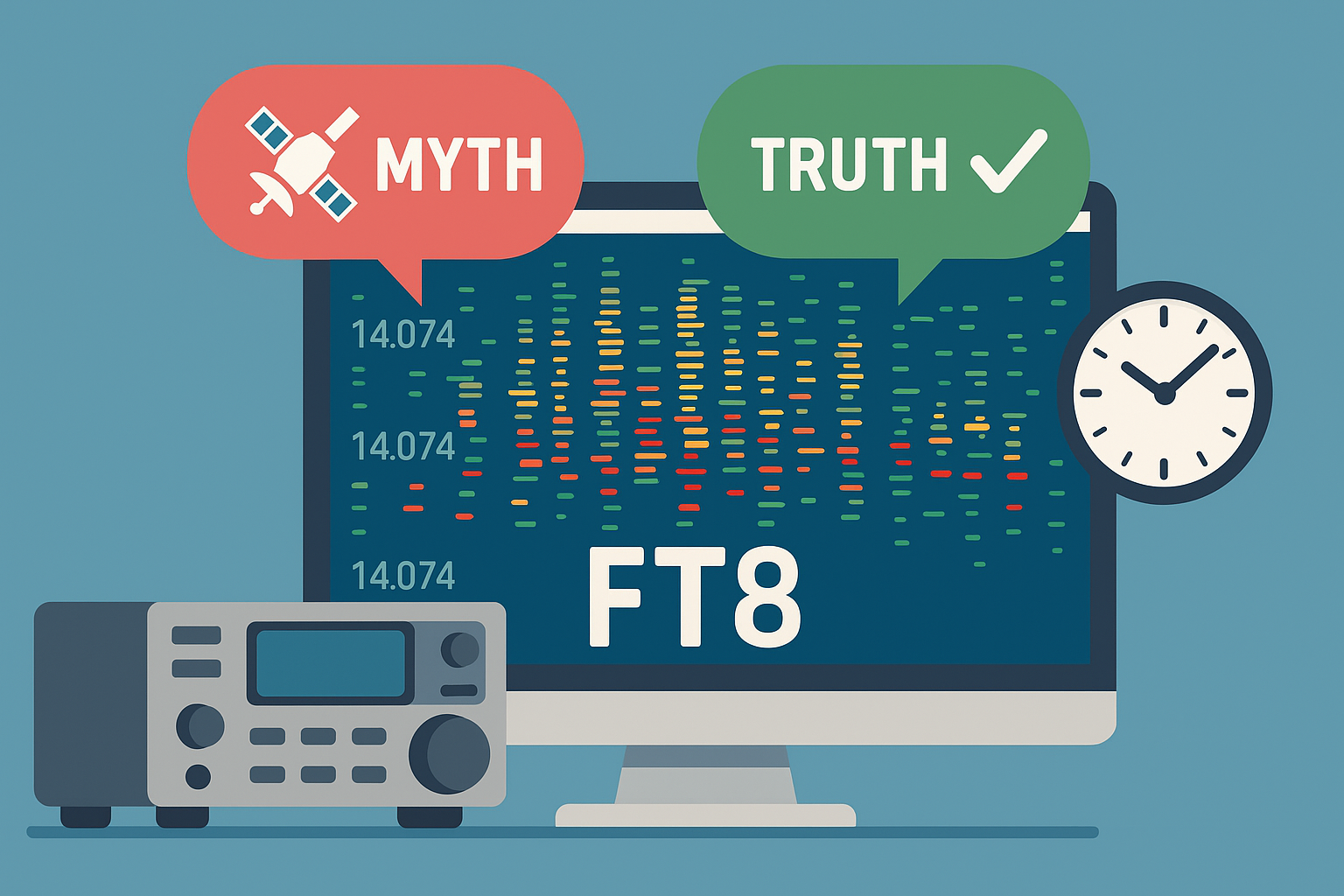Introduction
Correct timing is essential for weak-signal digital modes such as FT8 and FT4, yet misunderstandings about how that timing is achieved persist. Wrong assumptions can lead operators to purchase unnecessary hardware or install superfluous software. The following clarifies the most common myths and explains why modern devices—particularly macOS and iOS—already provide all that is required.
Myth 1 — The transceiver’s clock must be GPS-synchronized
Reality: FT8 and FT4 depend on the clock of the client device (computer, smartphone, or tablet), not the radio. The transceiver simply follows the audio stream provided by the software.
Myth 2 — A computer must use an external GPS to stay accurate
Reality: For Apple operating systems, built-in Network Time Protocol (NTP) services keep the system clock well within the tolerance that FT8 decoding requires. Apple devices poll Apple’s NTP servers continuously and adjust for network latency automatically.
Myth 3 — Third-party “clock fixer” utilities improve FT8 reliability
Reality: Additional software rarely improves upon the accuracy already achieved by the native NTP service. Extra background apps can, however, consume resources and complicate troubleshooting. On macOS and iOS, keeping “Set date and time automatically” enabled is sufficient.
Myth 4 — Deviations of a few milliseconds break FT8
Reality: Modern FT8 implementations like in all of my apps decode in several phases, accepting offsets of ±1 s—and often more—without issues. Timing precision remains more critical for secure network authentication than for FT8 signal exchange.
Practical Checks and Best Practices
| Task | How to Verify | Action Needed |
|---|---|---|
| Confirm system time | Visit time.is in Safari | Expect “Your time is exact” or minimal offset |
| Enable automatic time | System Settings → General → Date & Time | Ensure “Set Automatically” is turned on |
| Diagnose large offsets | Check firewall/DNS restrictions | Allow access to time.apple.com NTP servers |
| Temporary offline use | Rely on the device’s crystal oscillator | Apple hardware remains accurate for several days |
